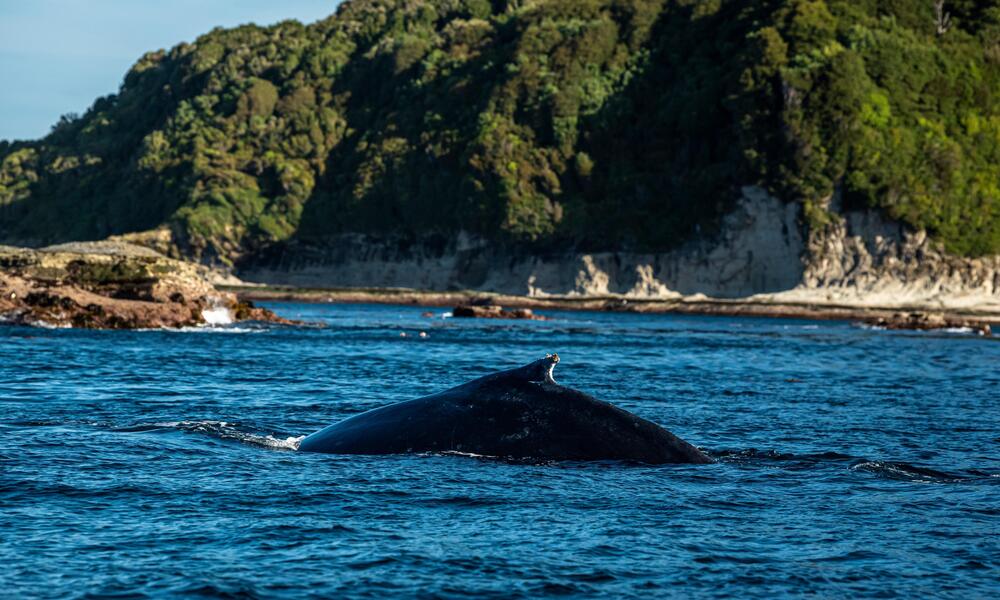The plant’s location here was no accident. Guafo lies in the Gulf of Corcovado, a vast waterway separating mainland Chile from the much larger Chiloé Island. Thanks to freshwater input from melting Andean glaciers, it has the perfect conditions for an abundance of krill, making it the most important feeding and breeding grounds in the Eastern South Pacific for blue whales. It’s also a frequent stop in the austral summer for other cetaceans, including humpbacks, orcas, sei and southern right whale
Today, in 2023, this corridor once known for the pillaging of animals, is now teeming with them. That’s why Yaqueline Montecinos, Marine Biodiversity and Ocean Policy Coordinator at WWF Chile, has moored a research vessel near the old whaling station. Within an hour of arriving in a nearby fishing cove, she spots a distant spout. Then, a humpback whale emerges from the steel-blue waters, carving a path in and out of waves along the cloudy horizon. A few minutes later, it even wows her with cinematic acrobatics.
“This place is home to such a massive amount of biodiversity,” she says from the vessel’s bow as sea lions bound down slippery rocks and a pod of Peale’s dolphins scurries nearby. Another humpback rises from the distant sea before slapping its white-tipped tail, launching a burst of oceanic fireworks.

